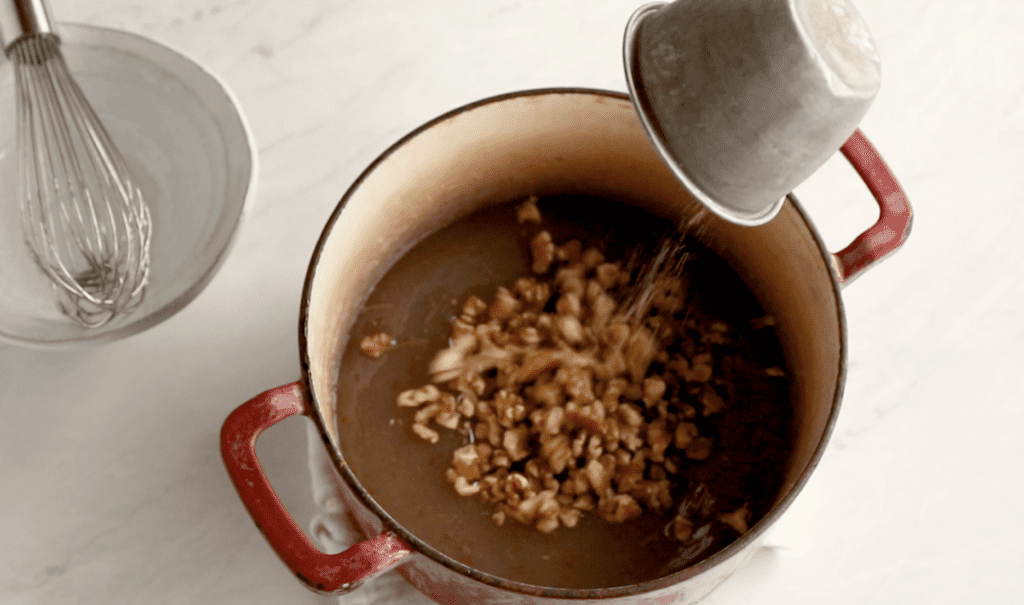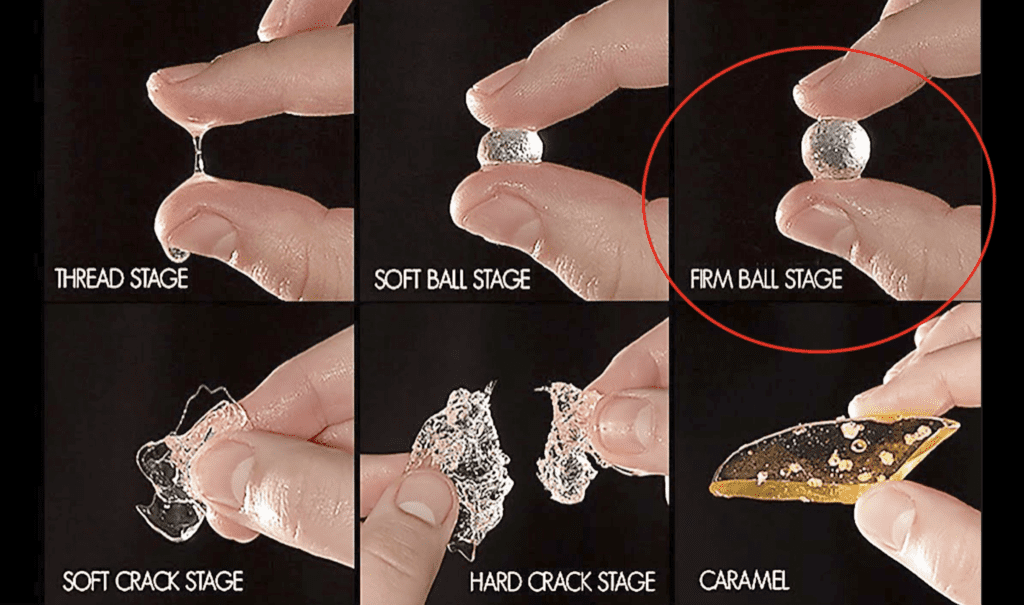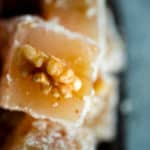Description
Try this double-roasted Turkish delights with nuts recipe to taste a delicious version of lokum with an entirely different texture! Authentically vegan & gluten-free.
Ingredients
For Lokum:
- 350g (scant 2 cups) white sugar (See Note 1)
- 175ml (3/4 cup) water (for syrup)
- 1.8g (1/4 teaspoon) citric acid (See Note 2)
- 70g (1/2 cup + 1 tablespoon) cornstarch
- 500ml (2 cups + 5 teaspoons) water (for cornstarch)
- 1 cup of walnut pieces, roasted
- optional: 1 teaspoon cinnamon (See Note 3)
For Cutting & Dredging:
- 1 cup very finely shredded coconut
Notes on the Ingredients:
- Make sure the sugar is the regular white variety as the less processed yellow-looking ones will make it difficult to judge the final steps of this recipe where we partially depend on the color.
- You may substitute citric acid with either the same volume of cream of tartar, or quadruple the volume of lemon juice. 1 tbsp of lemon juice roughly equals 1/4 tsp of citric acid. However, unlike citric acid or cream of tartar, lemon juice will impart some flavor to your Turkish delight.
- Cinnamon isn't very traditional in lokum, but brings warmth and elevates the flavor of this recipe. Feel free to add any other spice you wish like ground ginger, cardamom, clove (goes a long way), or a ready-made pumpkin pie spice mix.
Instructions
1. Add the sugar, citric acid, and water into a heavy-bottomed pan and mix until the sugar dissolves.
2. Bring the mixture to a boil on high heat, then lower the heat down to a simmer and wait until the syrup reaches 250°F (hard ball stage, See Note 1). Make sure to adjust this temperature for your kitchen's altitude and observe the pan closely—a clipped candy thermometer will give the most reliable results. This should take 15-30 minutes depending on your stove's heat output.
3. Meanwhile, prepare the cornstarch mixture by adding cornstarch and water into a jar. Close the lid and shake vigorously until there are no visible lumps of starch. Alternatively, thoroughly mix in a separate bowl.
4. Once the syrup reaches 250°F, turn off the heat and gradually add the just-shaken cornstarch mix into the pan, whisking continuously.
5. When all the cornstarch is incorporated, turn the heat on to medium-low and continue whisking until gelation. It should only take a few minutes for the mixture to thicken.
6. Once it’s thickened, put the heat on low to simmer, and make sure to mix it (See Note 2) about every 7-8 minutes to prevent it from sticking to the bottom. Be careful as the thickened mixture may splatter. Continue this process for 1-2 hours.
7. Prepare a mold by spreading a small amount of neutral oil into a container (See Notes 3 & 4).
8. To judge whether the mixture is done cooking, look for a relatively thick—but not gloopy—texture and a medium-dark shade of amber. Around the 1 1/2-hour mark, the mixture is usually very close to being done. This timeframe will depend on a variety of factors such as pan width, changing the ingredient amounts to make more/less lokum, and the stove's heat output. It can go up to 2 hours+.
9. When the Turkish delight is done cooking, turn off the heat, and mix in the cinnamon or other spices (optional). Add in roasted walnuts, mix, pour into the container, and set aside at room temperature for at least 5 hours—preferably a full day especially if you’re somewhere hot and humid.

10. The next day, preheat the oven to 350°F and line two baking sheets with parchment paper or silicone baking mats. Meanwhile, sprinkle shredded coconut into the lokum container then cut out a strip from the edge so that you can remove the entire slab. Cut into cubes, then dredge them in coconut.
12. Place the lokum cubes onto the baking sheets and bake for 20 minutes, quickly swap the trays at the 10-minute mark for even baking.

12. Refrigerate the delights for at least one hour after baking, then bring them back down to room temperature. Enjoy alongside Turkish coffee and water as is common in Turkey.
Notes
1. This is the most crucial part of the recipe. I can't recommend a candy thermometer enough, but in case you're set on making do without, use the cold water test. We’re looking for the hard ball stage: meaning that once you pour a small amount of the simmering syrup into cold water—it should form a hard but malleable ball between your fingers. You need to be very quick in doing this, because the heating rate accelerates very rapidly after about 220°F because of the high sugar concentration in the syrup. Anywhere up to 260°F is okay, but go above this and you will get hard candy without realizing after 2+ hours of cooking.

If you are using a candy thermometer, testing it on boiling water to ensure it works correctly is not a bad idea. Additionally, make sure to factor in the altitude of your kitchen. For instance, if you are making this in Denver, CO, you'll be looking for 240°F instead 250°F. Each 500 ft increase in elevation causes water to boil at 1°F lower.
2. Make sure to be gentle while stirring after gelation. Any forceful whisking may cause the starch chains to disintegrate, causing a thinned-out consistency. However, a little thinning after the initial thickening is expected whenever cornstarch gelates.
3. A 5in x 7in glass container used for the original recipe yields 48 ~1-inch cubes of Turkish delight in two layers. However, feel free to use whatever size container is available to you.
4. Some prefer to line the container with plastic wrap instead of using oil. While this will help in removing the slab of lokum, it also creates numerous creases on the surface. Therefore I don't prefer it.
5. Store Turkish delights in the refrigerator covered with all the leftover cornstarch & powdered sugar mix from dredging. Prior to serving, make sure to bring Turkish delights back to room temperature. Consume within two weeks for best results.
- Prep Time: 10 minutes
- Cook Time: 2 hours 30 minutes
- Category: Dessert
- Method: Cook
- Cuisine: Turkish
